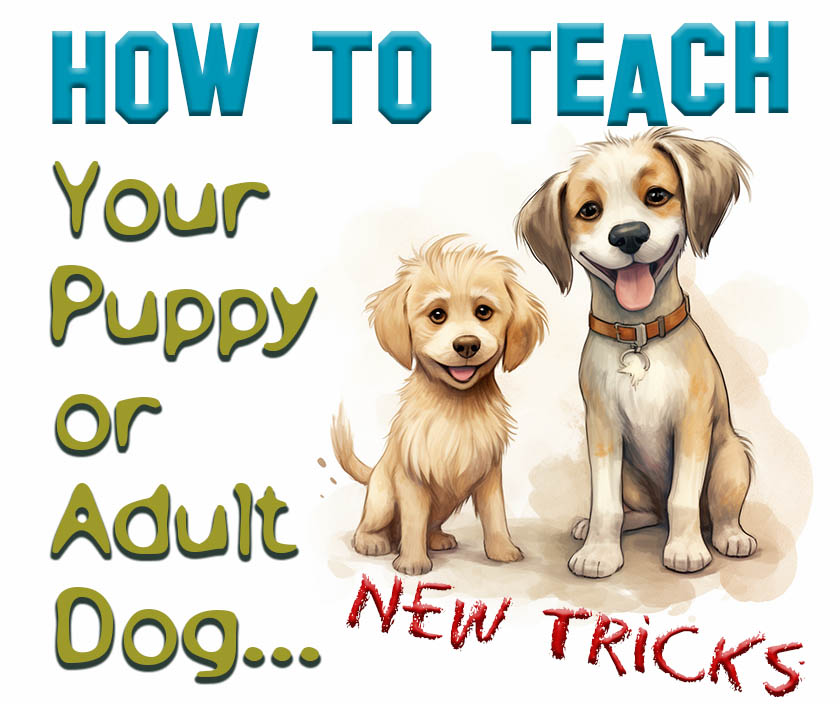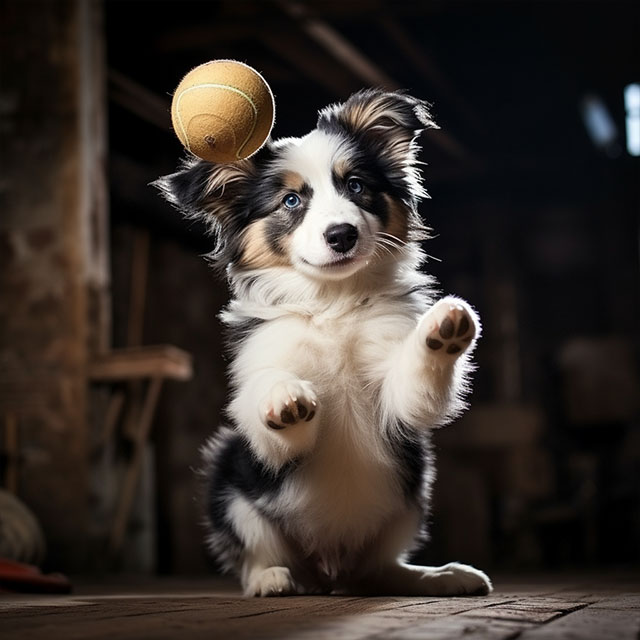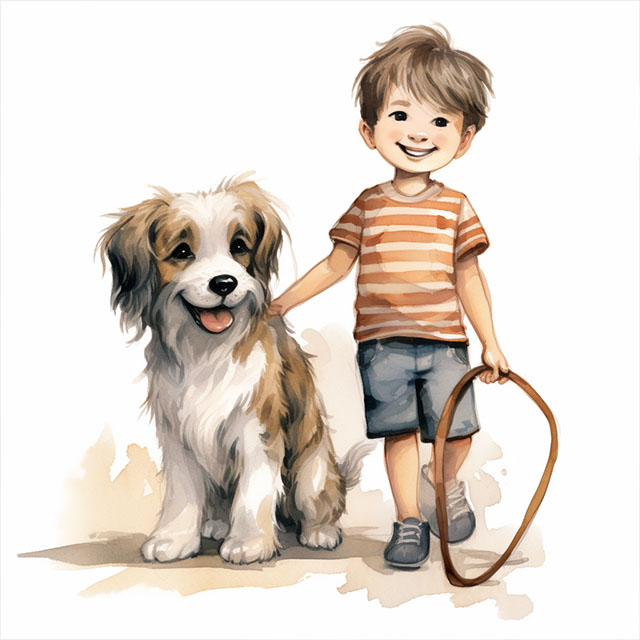info@petprintstudio.com
How To Teach Your Puppy or Adult Dog New Tricks

Teaching your dog new tricks can be a rewarding and enjoyable experience for both you and your furry companion. It strengthens the bond between you and helps keep your dog mentally stimulated. Whether you have a playful puppy or an adult dog, the process of teaching tricks remains similar, though some considerations may differ. In this article, we’ll provide you with valuable insights and tips on how to teach your dog new tricks, tailored for both puppies and adult dogs.

Teaching Tricks to Your Puppy

Lay the Foundation
- Socialization: Before diving into trick training, focus on socializing your puppy with various people, places, and other animals. A well-socialized puppy is more receptive to learning.
- Basic Commands: Start with basic commands like “sit,” “stay,” and “come.” These commands build the foundation for more complex tricks.
- Positive Reinforcement: Use treats, praise, and positive reinforcement to encourage your puppy. Rewarding desired behaviors motivates them to learn and repeat the tricks.
Choose Suitable Tricks
- Simple Tricks: Begin with simple tricks like “shake hands” or “roll over.” These are easier for puppies to grasp and build their confidence.
- Physical Limitations: Keep in mind your puppy’s physical capabilities. Avoid tricks that require significant jumping or strenuous movements, as this could harm their developing bones and joints.
Short, Fun Training Sessions
- Short Attention Spans: Puppies have short attention spans, so keep training sessions brief (5-10 minutes) and frequent throughout the day.
- Playful Approach: Make training enjoyable with playful interactions. Use toys and treats to keep their interest and enthusiasm high.
- Consistency: Be consistent with your cues and rewards to reinforce learning.
Teaching Tricks to An Adult Dog

Assess Prior Training
- Review Basic Commands: Ensure your adult dog is familiar with basic commands. If not, spend time reinforcing them before moving on to new tricks.
- Adapt to Age: Consider your dog’s age and physical condition when selecting tricks. Adult dogs may have some limitations or health issues that need to be accommodated.
Patience and Persistence
- Patience: Adult dogs might take longer to learn new tricks compared to puppies. Be patient and avoid getting frustrated if progress seems slow.
- Breaking Down Tricks: Complex tricks can be broken down into smaller steps. This makes learning more manageable and prevents overwhelming your dog.
Positive Reinforcement Continues
- Consistent Rewards: Continue using positive reinforcement to encourage desired behaviors. Treats, praise, and affection are powerful motivators.
- Verbal Cues: Use clear and consistent verbal cues for each trick. Dogs can associate specific words with actions more effectively over time.
Health Considerations
- Exercise and Warm-up: Prioritize regular exercise and warm-up activities to prevent injuries during training sessions.
- Vet Check-up: If you’re introducing more physically demanding tricks, consult your veterinarian to ensure your dog is in good health and physically capable.

Conclusion
Teaching your dog new tricks is an enjoyable and fulfilling experience, regardless of their age. For puppies, focus on socialization, basic commands, and short, fun training sessions. Choose tricks suitable for their age and avoid strenuous movements. For adult dogs, assess their prior training, be patient, and use positive reinforcement consistently. Adjust training techniques based on their age and physical condition, and don’t forget to prioritize their health and well-being throughout the process. With time, patience, and love, your dog will impress you and others with their new repertoire of tricks!

